
Is Metal Smarter Than a 5th Grader?

…
It’s not uncommon to see metalheads, or rock fans in general disparage mainstream music on the basis of lyrics. There may be some validity to these claims. This study from last year, for example, examined popular music on the basis of readability score, and found that most pop music landed between the second and third grade reading level. It did not, however, examine any extreme or classic metal. Metal is outsider art and frequently more musically complex than mainstream pop and rock music. But is it also more lyrically complex? And what about extreme metal, which uses sophisticated instrumental techniques? Do its lyrics keep step with its technicality?
Before addressing these questions, it’s critical to remember that the complexity of a set of lyrics isn’t a be all end all. Some simple texts, like ‘The Red Wheelbarrow’ by William Carlos Williams, touch on complex ideas though they are succinct. Still, we learn more language as we grow and educate ourselves, and the ability to use complex language is one sign of intelligence.
I ran 130 songs through a readability test utility, and examined them on the Gunning-Fog index, in order to compare them with one another, as well as with some other lyrical examples. This experiment was not meant to be an in-depth or definitive study. Rather, think of it as a visualized glimpse into one way of looking at music that is remarkably free of subjective bias.
Selection
I erred toward well-known bands in the genre whose lyrics would be readily available, and discounted any band whose members are not native English speakers for the sake of fairness. Sorry, Norwegian black metal fans, this doesn’t pertain to Mayhem. A better method would have been to select a large amount of bands at random through Metal Archives, but that site’s definition of metal rings sometimes-arbitrary and many of its listings have unknown or unpublished lyrics.
So I began with Black Sabbath, added Judas Priest, Iron Maiden, Motorhead and The Big Four thrash bands. To represent extreme metal, I picked a handful of classic death metal acts from English-speaking countries, including Death, Cannibal Corpse, Morbid Angel, Napalm Death and Carcass. Again, this is a very small sample that is probably not indicative of the genre as a whole, but it represents distinct and historic examples which remain frequently emulated.
Process
I selected each band’s ten most popular songs as listed by Last.FM, not counting covers or instrumentals. I pulled all lyrics from Darklyrics.com, removed notations of where a solo would occur and corrected spelling errors. I also added punctuation to the end of line breaks, and removed any repeated choruses, since the readability utility penalizes repetition and rewards long, complex sentences. Without punctuation at the end of a line, even a simple song can register above college level.
In my experiment, the text for “Run to the Hills” by Iron Maiden looked like this:
“White man came across the sea.
He brought us pain and misery.
He killed our tribes, he killed our creed.
He took our game for his own need.
We fought him hard we fought him well.
Out on the plains we gave him hell.
But many came too much for Cree.
Oh will we ever be set free?
Riding through dust clouds and barren wastes.
Galloping hard on the plains.
Chasing the redskins back to their holes.
Fighting them at their own game.
Murder for freedom’s a stab in the back.
Women and children the cowards attack.
Run to the hills, run for your lives.
Soldier blue in the barren wastes.
Hunting and killing’s a game.
Raping the women and wasting the men.
The only good Indians are tame.
Selling them whiskey and taking their gold.
Enslaving the young and destroying the old.”
Song lyrics frequently operate outside of grammatically-correct sentence structure, but that’s true of all music, not just metal. As such, these results in general probably skew a little low.
Comparison
Before I ran the metal lyrics through the utility, I established a few guidelines for comparison.
First, I looked at a song with, by my estimation, very simple lyrics. “Blitzkrieg Bop” by The Ramones scored 2.57. Meaning, according to the index, someone with between a second and third grade education could understand the song’s lyrics on first reading.
Then, I looked at a song with complex lyrics. GZA has the second-largest vocabulary in hip-hop on his solo albums. The title track to his debut album Liquid Swords scored 5.27.
Then, I looked at a song with critically acclaimed lyrics. Bob Dylan won the Nobel Prize in literature in 2016, and was a critical darling among the same critics that blasted Black Sabbath. Rolling Stone called his song “Like a Rolling Stone” the greatest song of all time, naturally. It scores 5.7, above GZA, but not by much.
Powell-Morse, who ran the lyrical analysis study in 2015, came up with the following grade level averages for separate genres.
Country: 3.3
Pop: 2.9 (tie)
Rock: 2.9 (tie)
R&B/Hip Hop: 2.6
Averaged together, those scores pup pop music in 2014 at an overall 2.93 grade level, not far from The Ramones.
I’m no statistician, but given those findings, I call anything scoring between 2 and 6 years of education within the normal limits of lyrical complexity for music meant for mass consumption, though I assume mainstream music to cluster near the bottom of that range.
Results
The classic metal sample, composed of Black Sabbath, Iron Maiden, Motorhead and Judas Priest all score within a fourth grade education. 4.19 to be exact. Judas Priest leads the pack with a 4.67 average.
…
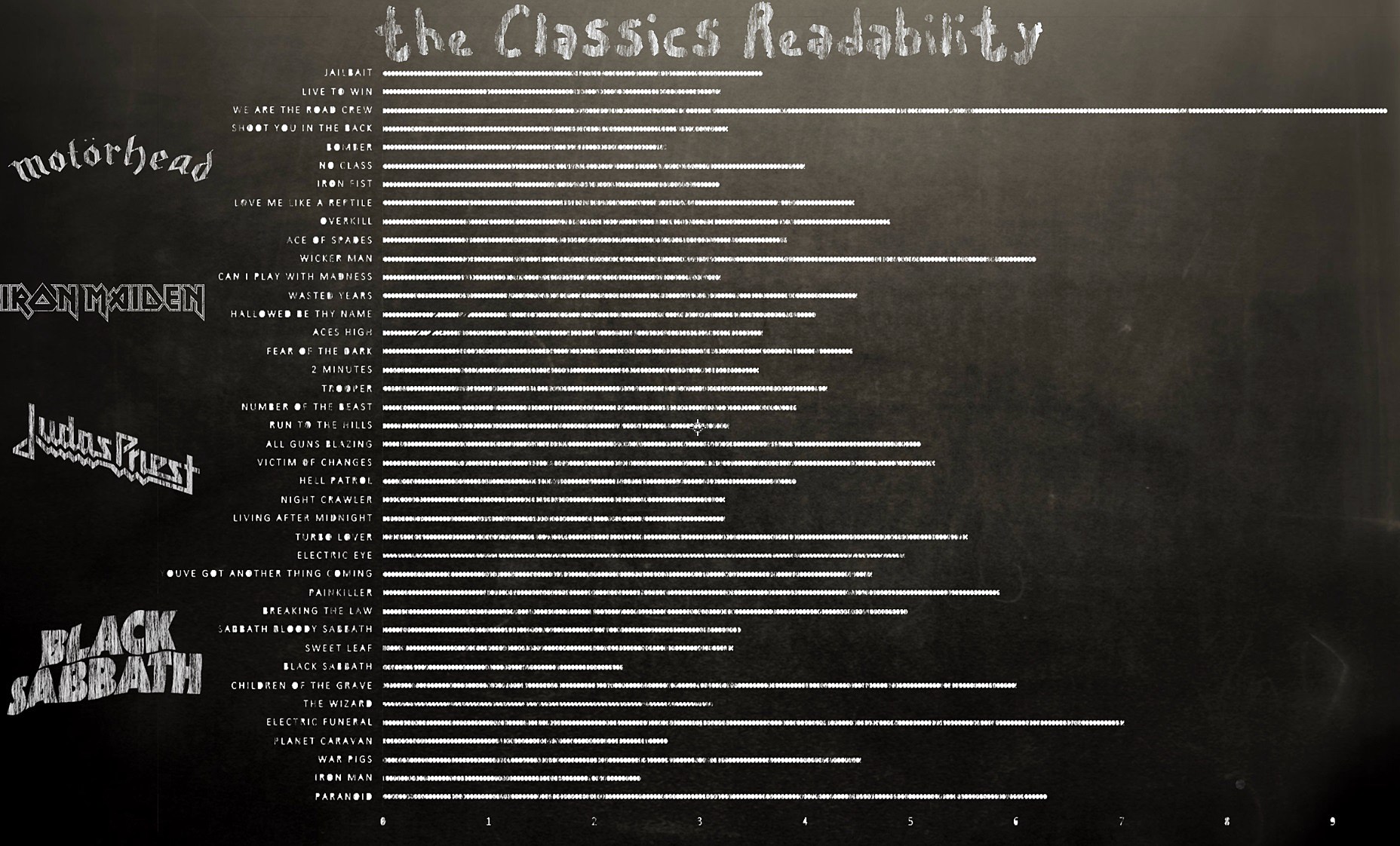
Bigger image HERE.
…
Every band wrote at least one song more complex than “Like a Rolling Stone”, though, with Motorhead’s “We are the Road Crew” in first with a 9.52. “Black Sabbath” by Black Sabbath on Black Sabbath scores under “Blitzkrieg Bop” with a 2.27, but so does “Iron Man” and “Bomber”.
The Big Four, on the whole, fare a better. They averaged 4.73, above Priest. Slayer in particular shines brightly, with a 6.55, easily smoking Metallica’s 4.47. Most of Slayer’s songs, on account of the sampling process, came from Reign in Blood, and a more random sample might drag their average down in a follow-up experiment.
…
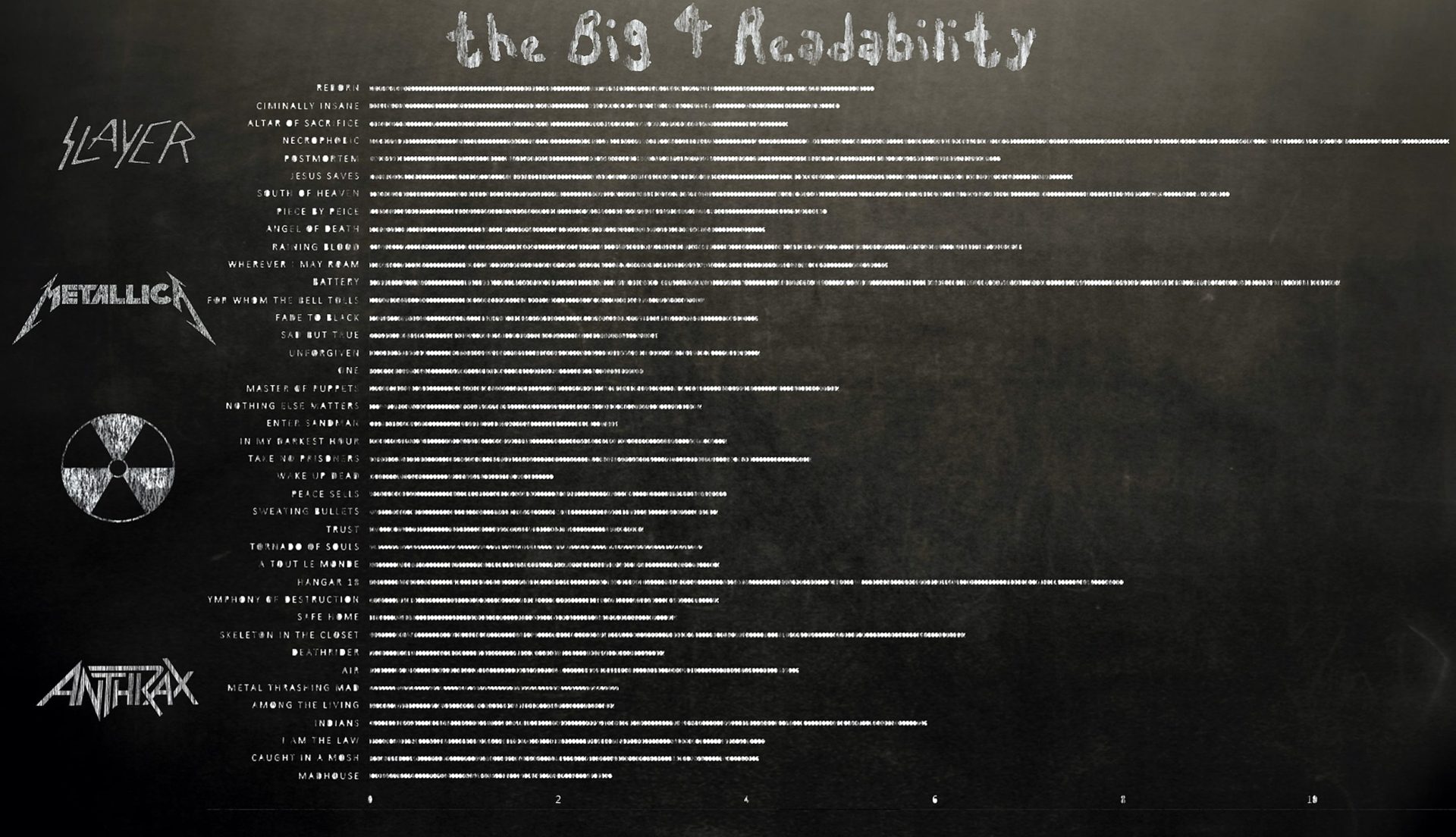
Bigger image HERE.
…
Broken down song-by-song, the big four follow a pattern, with each writing one or two songs far more lyrically complex than the rest of their repertoires. “Necrophobic” and “Battery” both curb-stomp “Like a Rolling Stone” with 11.46 and 10.3 respectively.
The death metal bands jump ahead of the thrash bands, with an average of 5.5. It’s a misleading leap on account of Carcass, who punch far above their weight with an 8.5 average. 3.1 years of education ahead of their next highest competition, Napalm Death. More impressive, the sampling process drew most of their songs from Heartwork, which eschews some of the even more complex medical terminology the band used on their early albums. A random sample would likely boost Carcass’s score even higher. Without Carcass, the death metal bands average 4.75 – above thrash, but not by a huge amount.
…
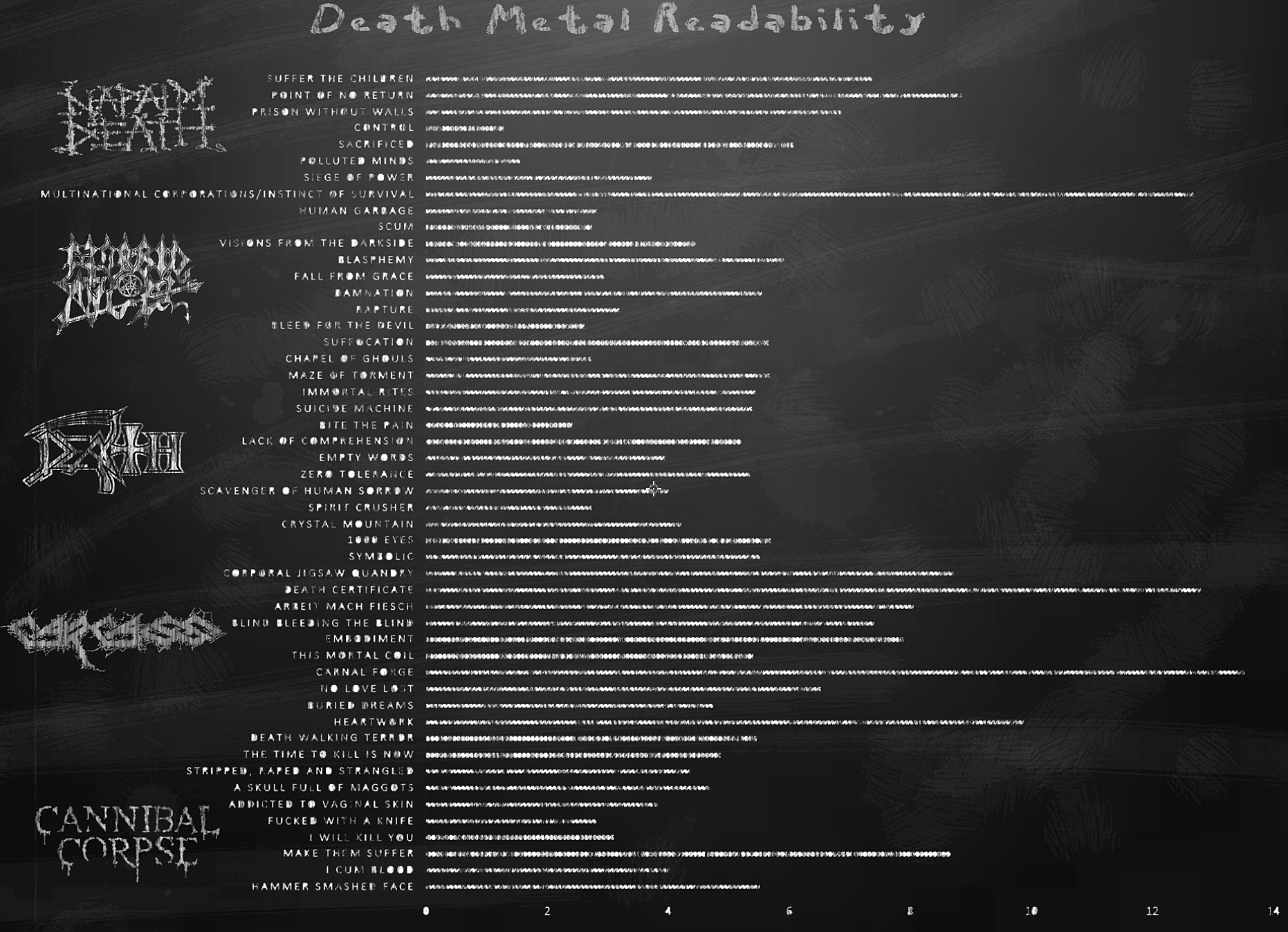
Bigger image HERE.
…
Taken altogether, the experiment’s results look fairly scattershot. The sample scored an average of 4.86, far above the average found by Powell-Morse, but less than one grade level below “Like a Rolling Stone”.
…
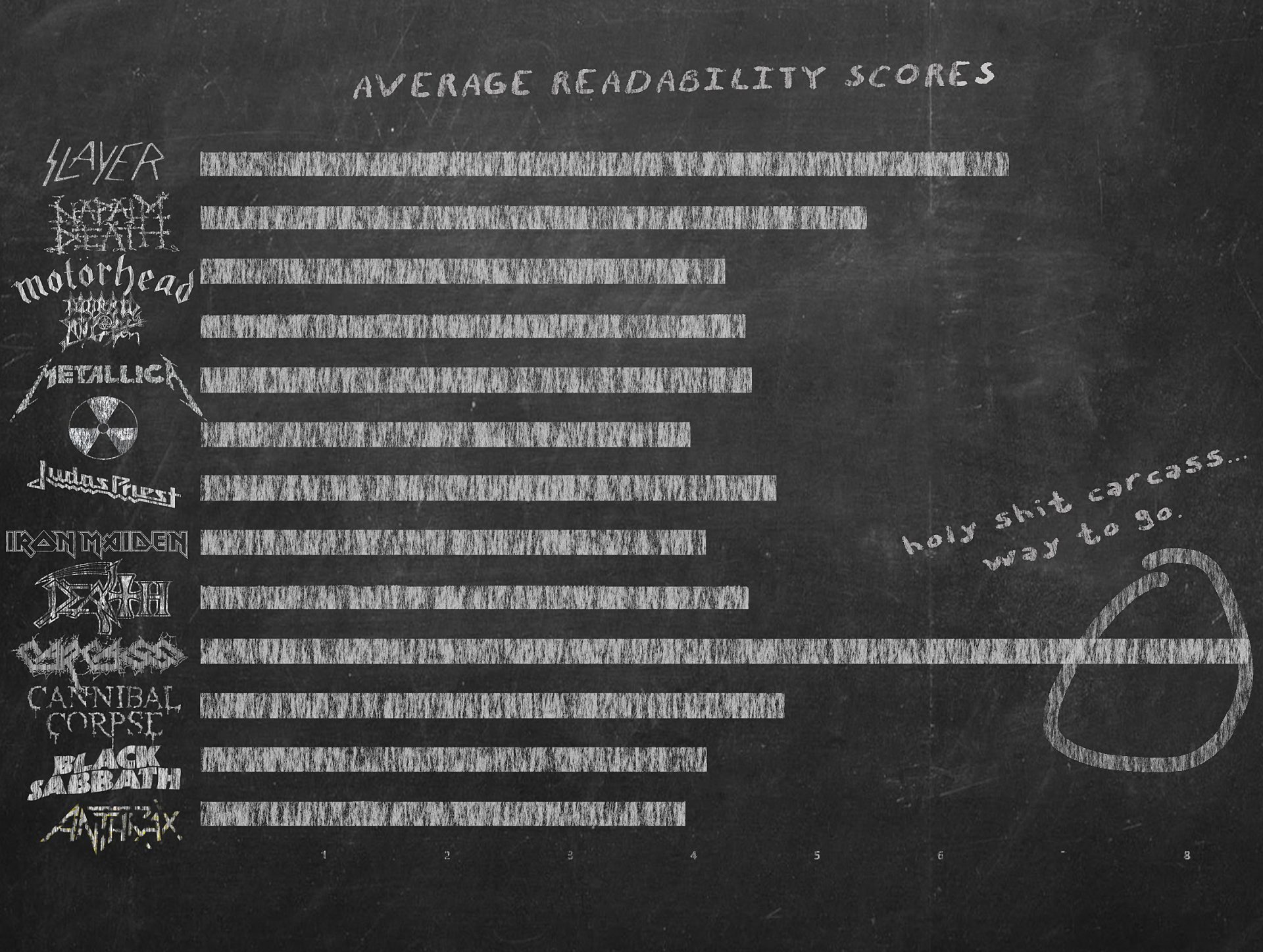
…
Even on this spread, Carcass skews the results. The median score, 4.45, lands within .1 educational year of “Altar of Sacrifice”, “Fear of the Dark”, “Love Me Like a Reptile”, “Wasted Years,” “Visions from the Darkside” Death’s average score, Metallica’s average score and Morbid Angel’s average score. The mode, or most common score, however, lands at 3.2, with “Can I Play With Madness?”, “Live to Win”, “Living After Midnight” “Night Crawler”, “Rapture,” “Run to the Hills”, “Safe Home,” and “Shoot You in the Back” all scoring within .01 educational year of that number. They’re above Powell-Morse’s average for pop music in 2014, but not by much.
Then again, most of the groups who participate in that lowball cluster also wrote more complex songs. Almost every band wrote at least one song more lyrically complex than Rolling Stone’s Greatest Song Ever Written (Death barely missed with a 5.69 on “1000 Eyes”). Maybe more importantly, Black Sabbath may have written one of the least complex tunes, but they also wrote “Electric Funeral”, which score 7.02 educational years, well above “Like a Rolling Stone”.
The data here (limited as it is) doesn’t suggest any strong correlation between genre and lyrical complexity. On first glance metal does look a bit more complex, lyrically, than the mainstream, but the data suggests that’s more the result of a few strong outliers than any one systemic trend.
In other words, popular music is just popular music, even if it’s got loud guitars and fast percussion. The pop stars of today can be as sophisticated as the most acclaimed songwriters of yesterday, and metal can be just as complex, or simple. That said, the next time someone tells you metal has dumb lyrics, just tell them to listen to Carcass.
…
For a bigger view of the visualizations (this means you, mobile readers) check out the gallery below.
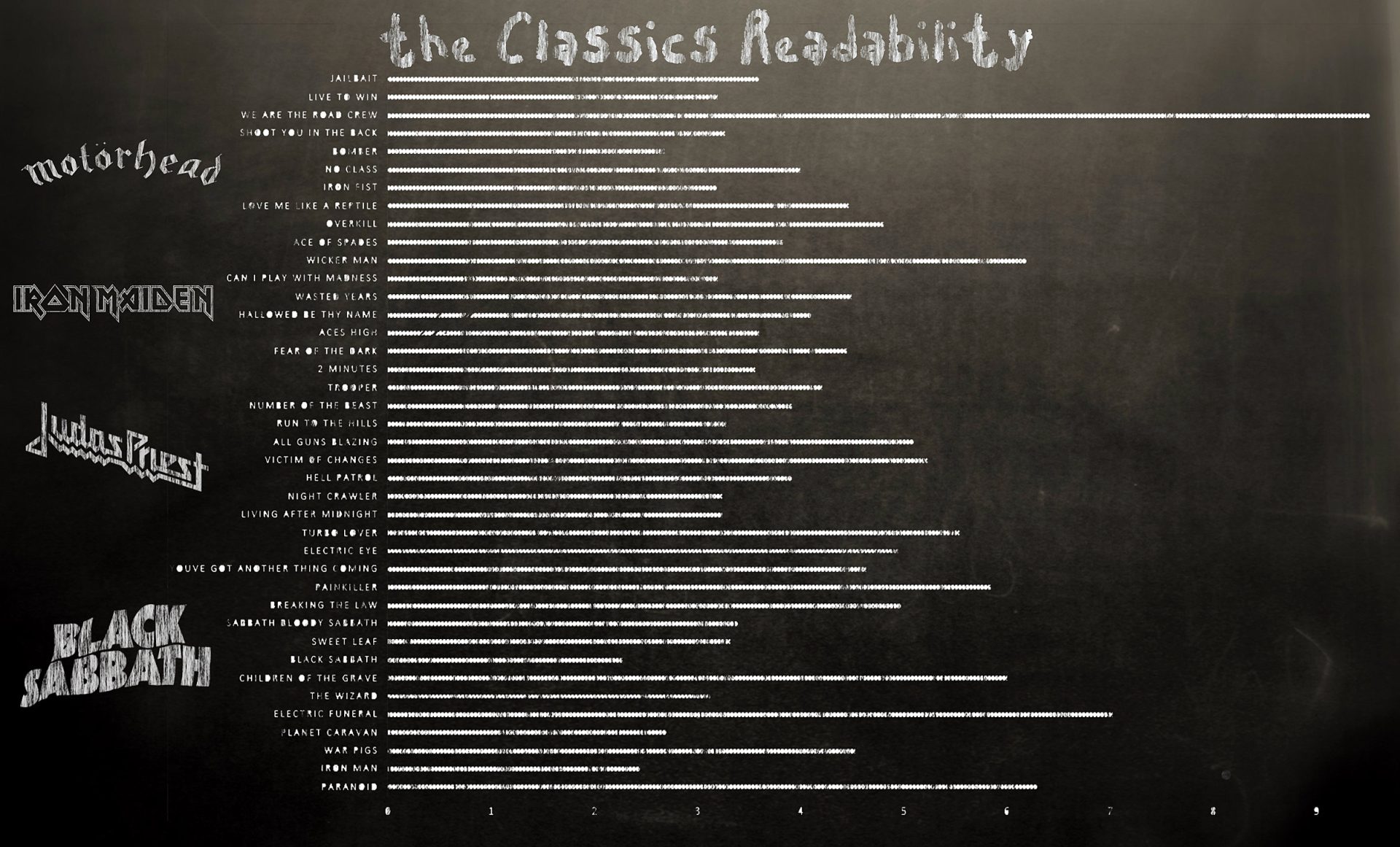
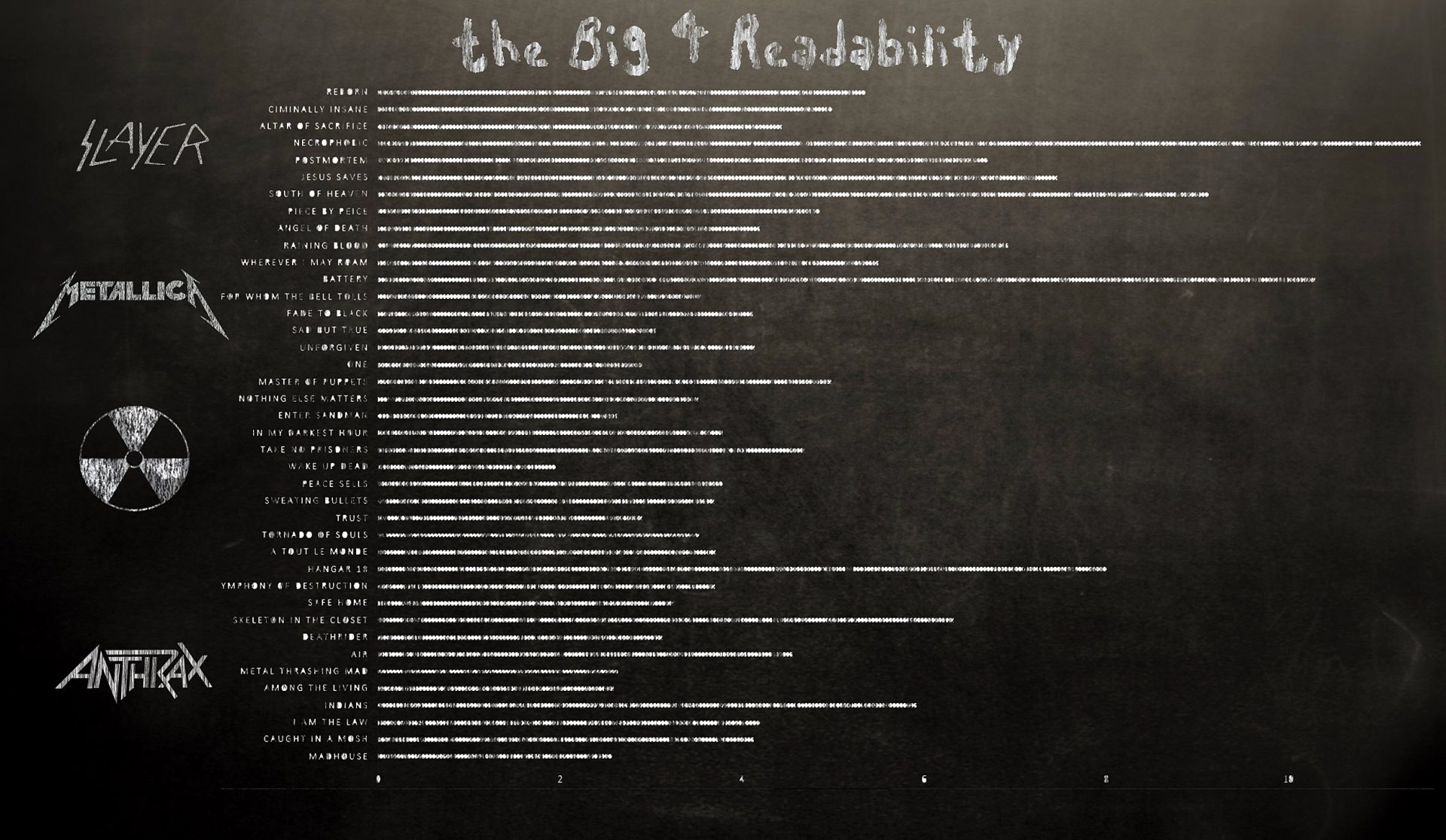
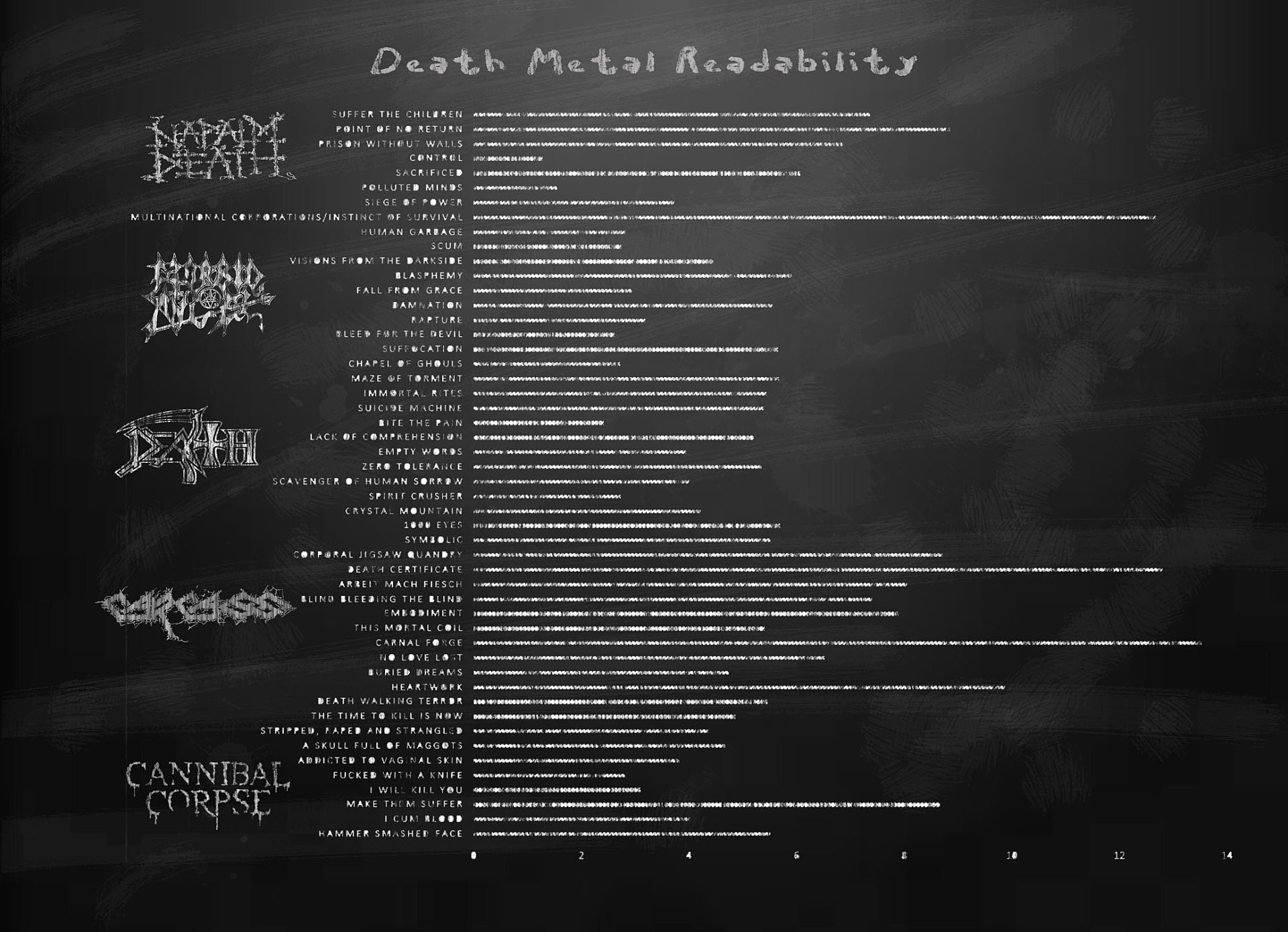
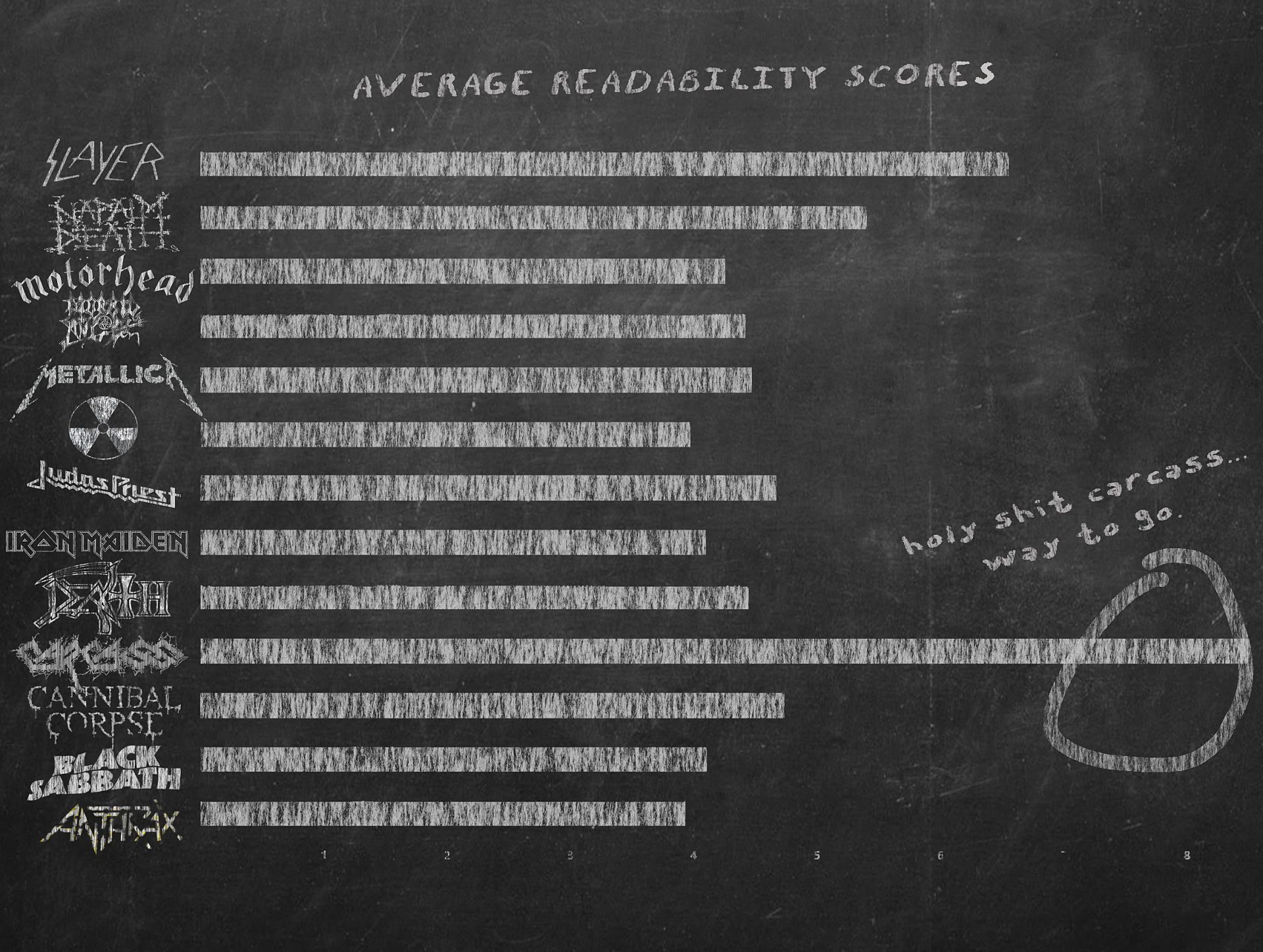
…










